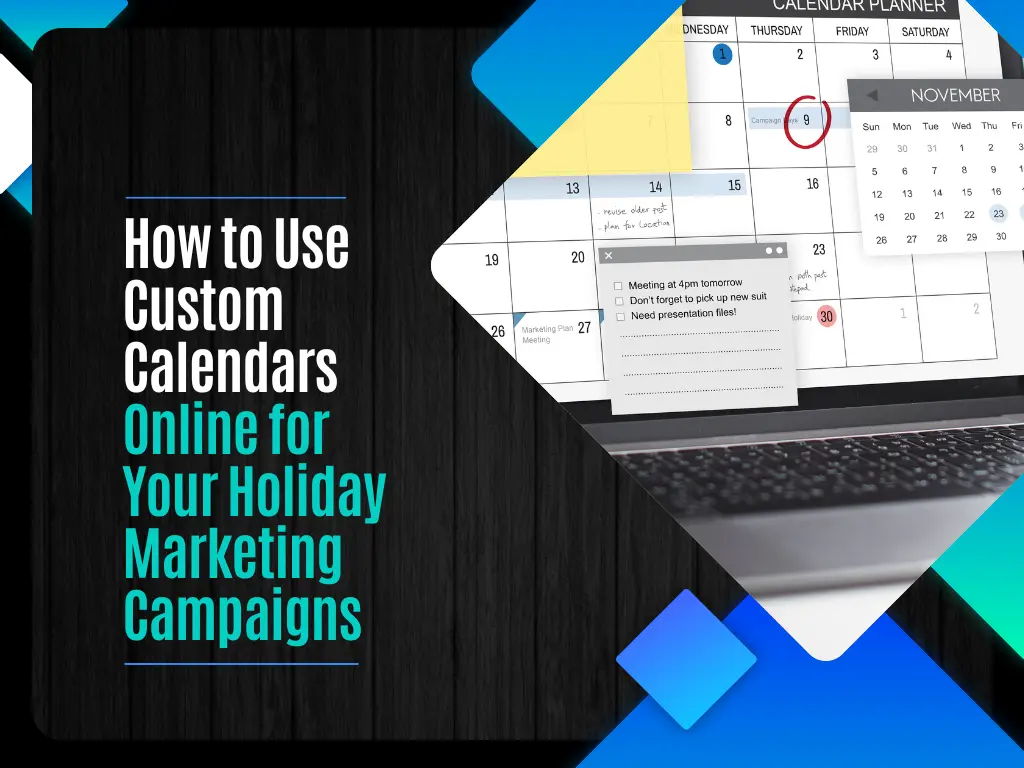How to Use Custom Calendars Online for Your Holiday Marketing Campaigns
"Learn how to leverage custom online calendars to boost holiday marketing campaigns, engage audiences, and drive seasonal sales effectively.

The holiday season is a time for businesses to connect with their audience through means like customized calendars. These calendars combine practicality with marketing appeal by incorporating company branding and seasonal promotions in their designs to engage customers year-round. This article delves into the use of calendars in holiday advertising strategies.
The Appeal of Custom Calendars
Custom calendars online offer several advantages that go beyond being a useful tool in daily life for people who receive them – they also act as a consistent reminder of a brand since they are present in homes and workplaces physically rather than appearing temporarily as digital advertisements do. Designing these calendars to align with the identity and essence of a company in terms of values and creativity can help strengthen brand awareness and build customer loyalty effectively.
In addition to that point raised earlier about calendars being great for creativity purposes, too! Companies have the chance to personalize them with dates and events or exclusive deals to boost engagement with users—a nice touch! Customized calendars featuring designs and useful information can leave an impact on people and inspire them to engage more with the brand.
Planning the Calendar Design
Creating a personalized calendar starts with knowing who you’re designing it for – think about what they like and what they need! When making a calendar for your business to use or for customers to enjoy at home or work on their desks or walls, make sure it looks nice and has things on it like pictures and special dates! This way, people will want to look at it and use it all the time.
Make sure to include components that resonate with the brand’s identity and values; for example, a business that promotes eco-consciousness could use recycled materials or nature-inspired motifs. Similarly, tech-forward companies might choose polished designs. Maintaining alignment with the brand’s core beliefs and communication reinforces an approach to marketing.
Incorporating Holiday Themes
Incorporating holiday elements into calendar layouts brings a vibe to the design, showcasing holidays or events that matter to the viewership group. This not only helps connect with customers but also assists them in organizing their own festivities.
To evoke the vibe of the holidays in your design choices, you could opt for holiday hues, cheerful symbols, or themed visuals. For instance, a calendar celebrating winter festivities could showcase snowflakes, festive trees, or New Year’s fireworks. These additions not only boost attractiveness but also create a heartfelt bond with viewers.
Promotional Opportunities
Personalized calendars present opportunities to incorporate unique promo codes or highlight upcoming sales and exclusive deals strategically within the calendar itself to entice users to return and interact more with the brand.
Including QR codes can also help increase visitors to platforms. Scanning these codes could direct users to a webpage, a video clip, or a giveaway with a holiday theme. These interactive features not only offer benefits but also encourage stronger bonds between companies and their target audience.
Distribution Strategies
To maximize custom calendars’ impact, it’s important to distribute them, whether by giving them out at events, including them with customer purchases, or even sending them as part of a holiday mailer campaign! Getting them to customers ahead of the holiday season really boosts their value and effectiveness.
There are alternatives to distributing calendars. It is possible to provide versions or downloadable formats to appeal to a tech crowd. Sharing these through email newsletters or social media platforms can broaden the scope and enable businesses to engage with an audience.
Measuring Campaign Success
Assess the effectiveness of a marketing campaign based on a calendar by keeping an eye on metrics like website traffic growth, social media interaction levels, and sales numbers while the calendar is in use. Gather feedback from recipients to gain insights into how the calendar was perceived and its impact.
Surveys and reviews from customers provide insights that can point out areas needing enhancement or effective tactics in use by a business entity. Examining this feedback and implementing changes accordingly to future marketing plans and strategies helps to secure ongoing success in capturing the attention of target audiences.
Conclusion
Personalized calendars offer a unique approach to holiday advertising, combining practicality with creativity to make a lasting impression on customers. These calendars can enhance brand recognition and foster stronger relationships with recipients through thoughtful design elements. Strategic distribution and effective promotional strategies help businesses integrate customized calendars into a successful holiday marketing plan. As companies explore innovative ways to connect with their clientele, personalized calendars serve as a meaningful and enduring tool.



